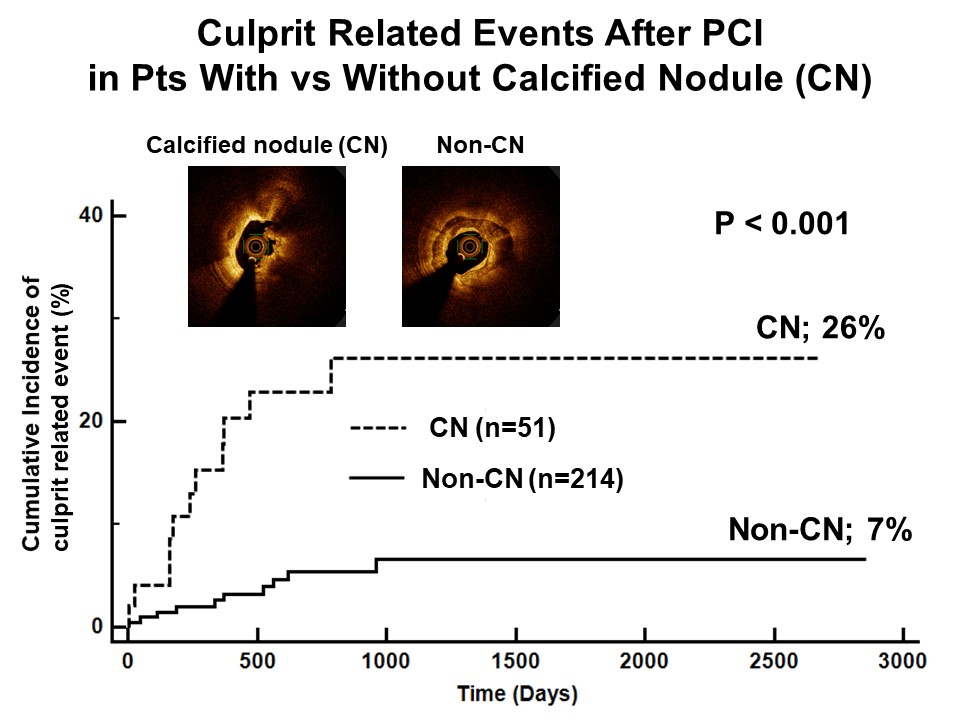A calcified nodule (CN) can lead to an acute coronary syndrome (ACS). Severe calcium (Ca) is associated with stent under expansion and adverse long-term outcomes after percutaneous coronary intervention (PCI). However, it is unknown whether an CN affects post-PCI outcomes in the 2nd generation drug eluting stent (DES) era.
Lots of interesting abstracts and cases were submitted for TCTAP & AP VALVES 2020 Virtual. Below are accepted ones after thoroughly reviewed by our official reviewers. Don¡¯t miss the opportunity to explore your knowledge and interact with authors as well as virtual participants by sharing your opinion!
* The E-Science Station is well-optimized for PC.
We highly recommend you use a desktop computer or laptop to browse E-posters.
ABS20191031_0006
| Imaging: Intravascular | |
| Impact of Calcified Nodule as Assessed by Optical Coherence Tomography on Clinical Prognosis After 2nd Generation Drug Eluting Stent Implantation | |
| Tetsumin Lee1, Taishi Yonetsu1, Tomoyuki Umemoto1, Yu Hatano1, Junji Matsuda1, Tetsuo Sasano1, Tsunekazu Kakuta2 | |
| Tokyo Medical and Dental University, Japan1, Tsuchiura Kyodo General Hospital, Japan2 | |
|
Background:
|
|
|
Methods:
We enrolled 265 patients (ACS: 26%, stable angina: 74%) with a single de novo culprit lesion, that underwent both pre- and post-PCI optical coherence tomography (OCT) imaging, having severe Ca (max Ca angle >180¡Æ by pre-PCI OCT) treated with 2nd generation DES. CN was defined as an accumulation of small Ca deposits with fibrous cap disruption of the calcified plate by OCT. Culprit lesion related cardiac events (CE: stent thrombosis or target vessel revascularization) were compared regarding the presence or absence of CN.
|
|
|
Results:
Mean patient age was 70 ¡¾ 9 yrs; 11% were on hemodialysis (HD). An CN was found in 19% (51/265) of patients and was associated with a higher rate of CE compared with non-CN pts (CN: 26% vs non-CN: 7%, p < 0.001). In Cox proportional hazards model, CN (hazard ratio [HR] 2.85, 95% confidence interval [CI] 1.07-7.63, p = 0.04) was independently associated with CE in addition to smaller post-PCI minimum stent area (HR 0.73, 95% CI 0.56-0.96, p = 0.02) and the presence of HD (HR 9.05, 95%CI 3.27-25.1, p < 0.001).
 |
|
|
Conclusion:
Among patients with severe target lesion calcium, the presence of an CN was an additional risk factor of culprit related worse outcomes after PCI with 2nd generation DES.
|
|